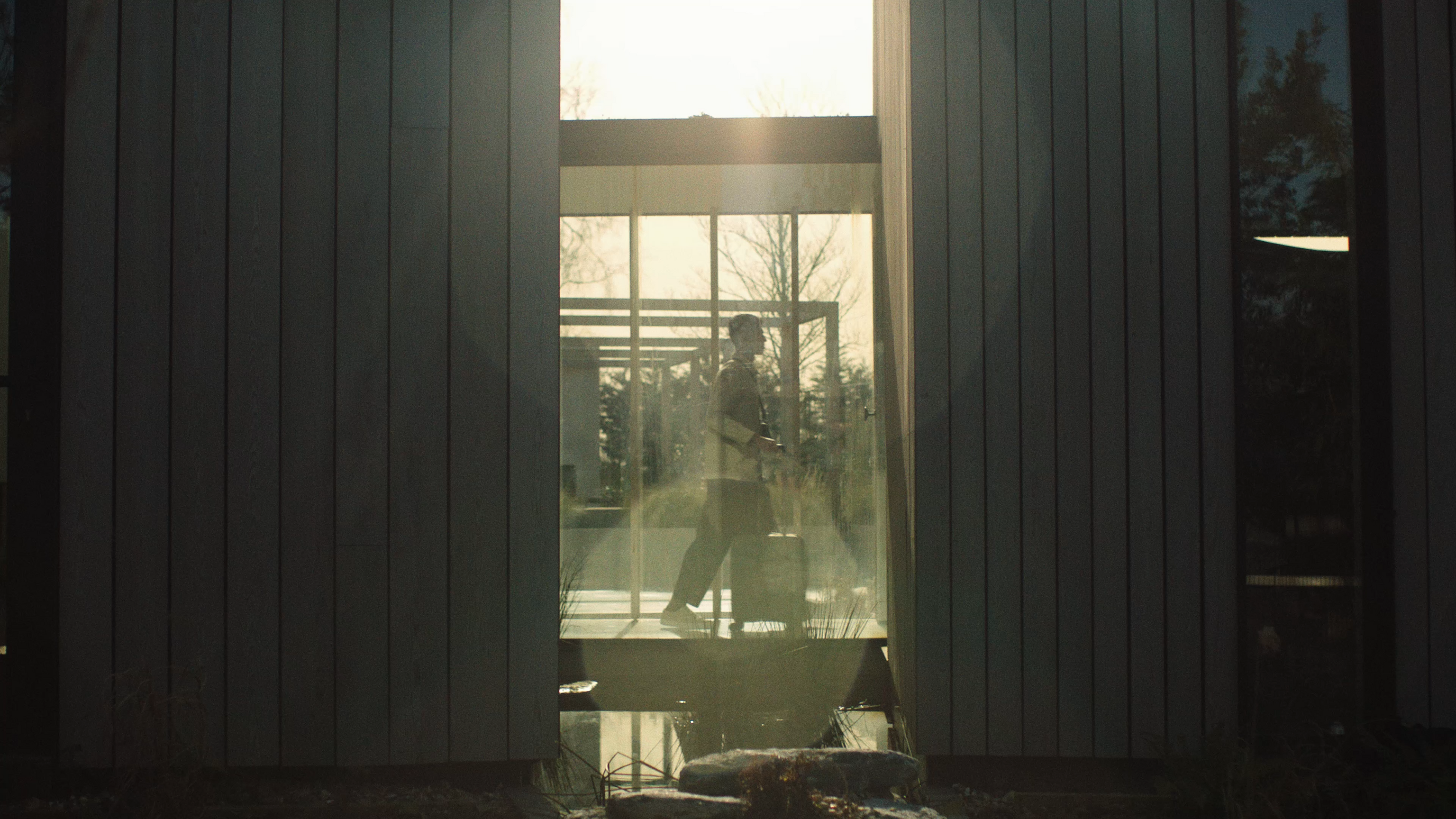Last year, Antler approached Gramafilm to produce a film campaign () introducing their newest release - the Stamford, their quietest suitcase yet.
Tasked with showing off the beautiful design and aspirational nature of the brand, as well as specifically hero-ing the USP of the quiet features of the design, the campaign presented a number of questions...
How to utilise natural light?
How to capture quietness in film?
How to shoot for multiple assets?
How to capture movement & design?
We spoke to director Tiago Kingwell on how he went about it.
Choosing shoot location....
With the Stamford's whisper-quiet wheels, we knew our film needed to give the viewer a sense of calm and movement. We did a few recces to find a location which could offer nice inside and outside areas, nature, and most importantly lots of natural light.
Natural light is a great way to create atmosphere whilst saving energy on a shoot, and given Gramafilm Goes Green, we wanted an environmentally friendly shoot.
As soon as we saw this location, we suspected it was perfect. However, we needed to make sure…
How to light using natural light?
To ensure the lighting on location would be perfect for shoot day, we used a nice bit of tech on the recce - the Sunseeker app.
Using the Sunseeker app, I was able to predict where the sun was coming through on particular shots helping adjust the schedule accordingly. We had HDMI lights on standby, but thanks to this we didn’t need them.
I wanted to create a warm tone and enough light difference to create an image with a lot of depth, especially for the silhouetted corridor scene.
Matching sound & colour...
With the release of the Stamford also came a new khaki colour range.
This meant the colour grading was especially important, as we could bring the green elements of the suitcases itself into the tinting of the film.
When it came to the edit, we also highlighted the details of surrounding sounds — using natural sounds of birdsong and water to create a dreamy scene.
How to capture movement?
Movement was key to evaluate the production value of this film. With only one day to shoot both the photography and the film, we had to be efficient from a production point of view, so we didn’t use a typical dolly system.
Instead, we bought a butt dolly from and got building, allowing us to build the perfect rig for our shot list.
We clamped it to the suitcase with the knuckles and arms from a C-stand to get all the close up and POV shots of the suitcase in motion.
From the start we knew that we needed the film to give the viewer a sense of calm and movement.
Tiago Kingwell – Director
What lens for close up movement?
To focus on the close up of the wheels, we equipped the rig with Alexa Mini 25mm cams for POV shots of the Stamford in use, whilst a periscope lens captured close-up detail of the super-quiet proprietary design.
By using a periscope lens for a close-up of the wheel, we got a very interesting wide angle, but rather too close. Also, we had a Zeiss Superspeeds MII uncoated, giving our picture a natural organic look with texture and flares.
How do to film for long and short form?
As with most campaigns, Antler wanted to adapt our assets for multiple purposes; a hero film, moving portraits, cut down social films, website assets, etc. Check that out .
Naturally, it meant we had to capture as much as possible — both in terms of film and location. On the recce, I was able to identify all the possible spots that could be used prior to the shoot, allowing for easy planning.
Given the different formats social films require, we made a conscious decision beforehand to prioritise a few vertical shoots to get a good 9x16 feel without compromising on the image.
"Bringing life to an object, even one that moves, can be a real challenge. I’m really proud of how we used the lighting, camera & set to amplify that movement."
Tiago Kingwell has been directing for Gramafilm for over ten years, including projects for Teoxane, Tate, Android & Red Bull. Gramafilm are a London based production agency founded in 2008. United by a passion for storytelling and a love of technology, our creative production studio brings authentic human stories to life.
Get in touch:















